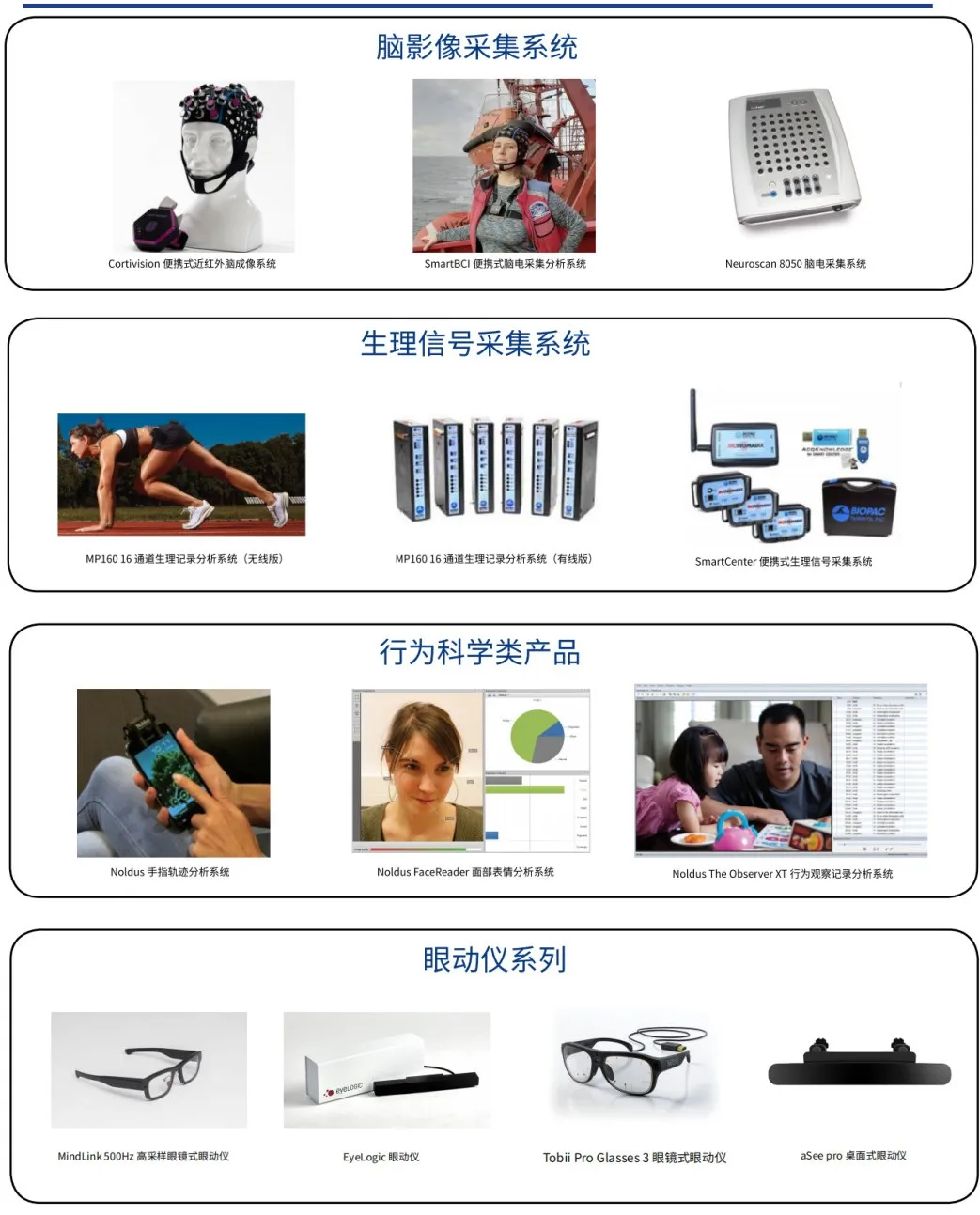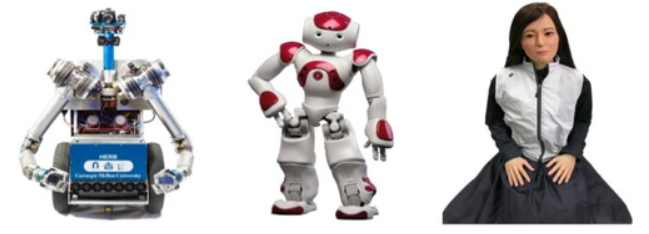


01
Research Background
Service robots are robots that perform useful tasks for humans or devices. When interacting with a service robot, its appearance makes the first impression on the user (K. Li et al., 2020) [1]. It is not difficult to imagine the following scenario: when you are choosing a service robot in a shopping mall, a robot with a characteristic appearance (e.g., facial aspect ratio) will attract your attention, make you feel interested and excited, and create a desire to obtain further information (Song and Luximon, 2021) [2]. In general, the appearance of service robots can be classified into four categories: anthropomorphic, animalistic, caricatured, and functional, and according to Fong, Nourbakhsh, and Dautenhahn's classification of social robots (2003) [3], anthropomorphic robots justify the design of the robot's appearance and behavior through intra-human attribution to conform to human expectations and promote human-robot interaction (Chiang, Trimi and Lo, 2022) [4]. Previous research has provided evidence that the anthropomorphic appearance of a product elicits positive emotions and increases its attractiveness to customers (Cao et al., 2022) [5]. However, there are conflicting views on the effects of anthropomorphic appearance of robots, with a meta-analysis of the effects of anthropomorphic design features on human-related outcomes showing that anthropomorphic appearance of robots positively affects perception (Roesler, Manzey and Onnasch, 2021) [6]. In contrast, research represented by the Valley of Terror phenomenon has shown that very high levels of anthropomorphic appearance elicit feelings of fear, mistrust, and other oddities in users. And emotional responses are complex, consisting of at least three aspects: self-report, expressive behavior, and physiological responses (Gross and Levenson, 1993) [7]. The effect of anthropomorphic appearance of robots on emotion has not been sufficiently studied through psychophysiological measures. It is therefore of interest to investigate the effect of anthropomorphization of service robots on users' emotional experience.
02
Research Methodology
1. Experimental design
Using a within-subjects experimental design, service robots were anthropomorphized with three levels of appearance: high (AH), medium (AM), and low (AL) levels. To test whether these robots have a significant effect on subjects' mood.
In addition to this, four dependent variables were chosen as multimodal measures: subjective emotional experience, eye tracking, physiological activity, and attitudes toward robot acceptance.
2. Recruitment of subjects
Fifty-two undergraduate students from different majors were recruited through social media, and all participants received 20 RMB in return. None had participated in the same study or used the service robot used in the experiment, and they did not take stimulants (e.g., caffeine in coffee or tea) and tranquilizers (e.g., alcohol or sleeping pills) prior to the experiment. These criteria were confirmed for all students by subjective reports, but two participants with severe myopia were excluded because their eye-tracking data could not be calibrated.
Finally, a total of 50 students (29 males and 21 females) completed the experiment (age range = 19-29, mean age = 23.75, SD = 4.14). They all signed an informed consent form before the experiment. The study was approved by the ethics committee.
3. Experimental flow
To assess the subjects' initial mood, participants were first asked to complete the PANAS scale, followed by being fitted with an eye-tracker and physiological recorder by the primary subject.
Twenty-one robotic images were presented one by one in the center of the display in a randomized order during the formal trial phase, and each image was displayed for 15 s. When all images had been presented, the electrodes were removed and the eye-tracker was taken off. Participants then filled out a questionnaire that included the SAM scale and an attitude scale.
At the end, they were thanked and asked how they felt about the three types of robots during the interview, the whole process is as follows.
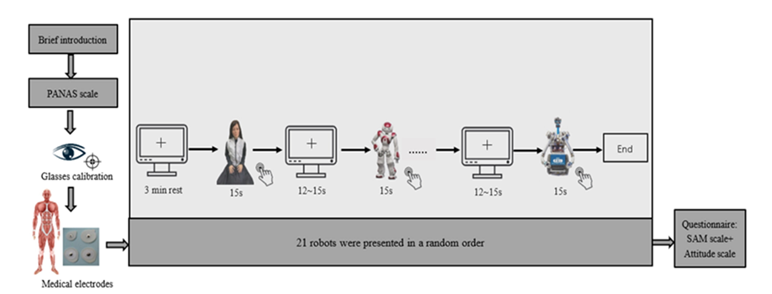


03
Results
1. Subjective emotional experiences and attitudes
1
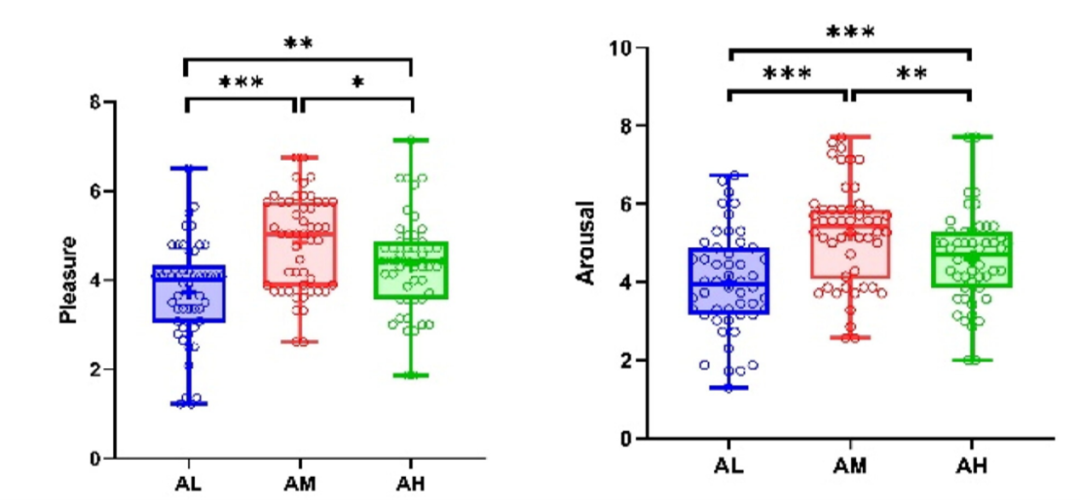


2
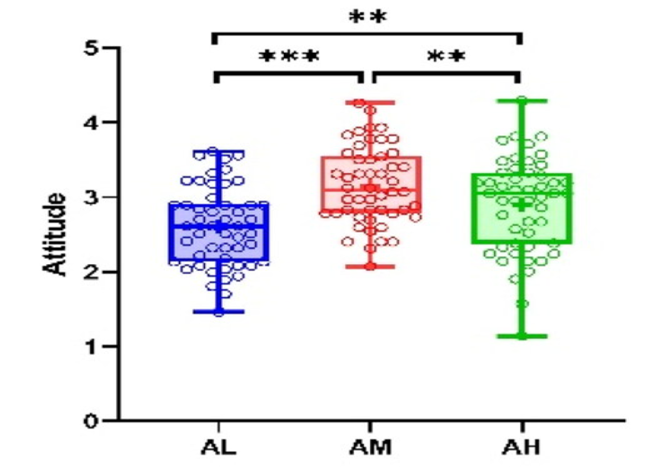


2. Eye movement results
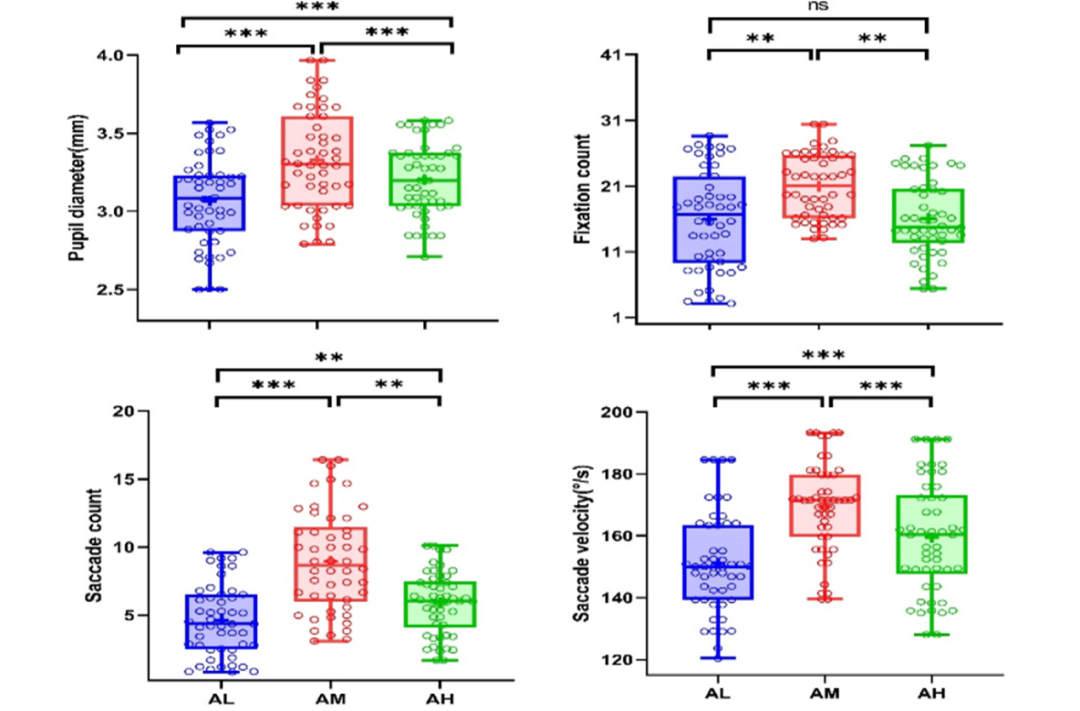


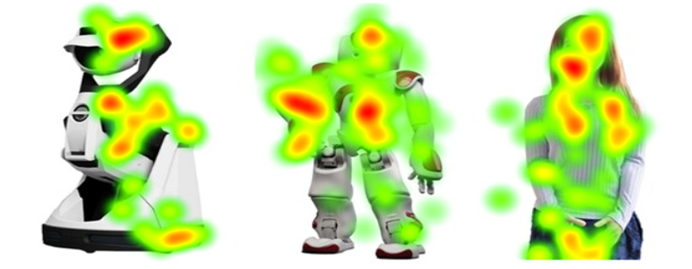





3. Physiological results



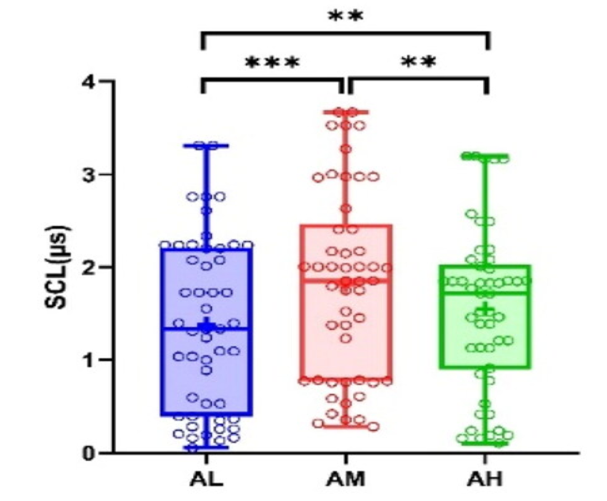





04
talk over
The purpose of this study is to understand how the anthropomorphic appearance of a service robot affects users' emotional experiences and attitudes. We used multimodal measures to analyze subjective emotional experience (pleasure, arousal), eye movements, physiological arousal (fEMG, EDA, and HRV), and attitudes to provide holistic insights into emotional responses in human-robot interaction.
This study also has some limitations and shortcomings, and in order to narrow down the scope of the study, we selected service robots and clustered them according to different degrees of anthropomorphism. It is worth noting that according to the definition given in ISO 8373:2012, service robots can also be subdivided into personal service robots and professional service robots, which are used in different work scenarios and have different functions. Therefore, future research should classify anthropomorphic service robots based on their usage attributes (personal or professional).
In addition, the participants of the experiment were young college students, which limits the generalizability of the findings to some extent. In fact, middle-aged and old-aged groups are equally noteworthy in terms of their emotional experiences, especially the elderly group, who may rely more on service robots to assist in their daily lives due to mobility problems and cognitive decline. Therefore, it would be an important research direction to include the elderly in the scope of the study to explore their emotional experiences and attitudinal changes when interacting with service robots.
05
Conclusion
The main objective of this study is to investigate the effects of anthropomorphic appearance of service robots on users' subjective emotional experience, attitude, eye movements and physiological arousal.
First, the findings confirm that multimodal measurement indices can be used to measure the emotional impact of a robot's anthropomorphic appearance, which include: subjective emotional experiences (pleasure and arousal), eye movement (situation) data, and physiological activity indicators.
Second, the study demonstrated that emotional experiences and attitudes changed nonlinearly as the anthropomorphic visual features of the robots increased. Specifically, the AM robot gave subjects a more positive emotional experience than the AH and AL robots. (Third, the AM robot significantly contributed to more positive subjective emotional experiences and attitudes than the AH and AL robots.)
Finally, measures of eye movements and physiological arousal further confirmed the positive effects of a robot with a moderately anthropomorphic appearance.
Literature citation
1. Zhang, Y., Cao, Y., Proctor, R. W., & Liu, Y. (2023). Emotional experiences of service robots' anthropomorphic appearance: a multimodal measurement method. Ergonomics, 66(12), 2039 -2057. https://doi.org/10.1080/00140139.2023.2182751
2. li, K., J. Zhang, L. Wang, M. Zhang, J. Li, and S. Bao. 2020. "A Review of the Key Technologies for sEMG-Based Human-Robot Interaction Systems." Biomedical Signal Processing and Control 62 (9): 1-17. doi:10.1016/j.bspc.2020.102074
3. song, Y., and Y. Luximon. 2021. "The Face of Trust: the Effect of Robot Face Ratio on Consumer Preference." computers in Human Behavior 116 (3): 1-9. doi:10.1016/j.chb.2020.106620.
4.Chiang, A.H., S. Trimi, and Y.J. Lo. 2022. "Emotion and Service Quality of Anthropomorphic Robots. "Technological Forecasting and Social Change 177 (2): 1-11. doi:10.1016/j.techfore.2022.121550.
5. Cao, Y., R.W. Proctor, Y. Ding, V.G. Duffy, Y. Zhang, and X. Zhang. 2022. "Is an Anthropomorphic App Icon More Attractive than a Non-Anthropomorphic One? A Case Study Using Multimodal Measurement." International Journal of Mobile Communication 20 (4): 419-439. 10035579. International Journal of Mobile Communication 20 (4): 419-439. 10035579.
6. roesler, E., D. Manzey, and L. Onnasch. 2021. "A Meta-Analysis on the Effectiveness of Anthropomorphism in Human-Robot Interaction. " Science Robotics 6 (58): 1-10. doi:10.1126/scirobotics.abj5425.
7.Gross, J.J., and R.W. Levenson. 1993. "Emotional Suppression: Physiology, Self-Report, and Expressive Behavior." Journal of Personality and Social Psychology 64 (6): 970-986. doi:10.1037/0022-3514.64.6.970.
Company Profile



